A couple years ago I planted a Sungold cherry tomato that grew into a jungle: ten feet wide, taller than me, I wanted a machete to hack into the middle to grasp those golden fruits. I supported the plant in no manner.
That’s an option for tomato growers, no support. But most of us give some kind of props. When I lived in Lesotho, I was charmed to find that many people used branches pruned off their peach trees to stick into the ground and let their tomatoes crawl over. This kept most of the fruit off the dirt and made picking involve less bending.
Those are two of the main goals of supporting the sprawling vines of the tomato plant: unblemished fruit and easy harvesting. My giant old Sungold plant gave me neither gift — because I hadn’t given it the gift of something to lean on.
These days, I set five-foot tall cages around all of my cherry tomato plants, two-and-a-half-foot tall cages around many of my other tomato plants, and occasionally stake or refrain from supporting a tomato plant at all.
Those are what I see as the four common methods. Each has a place, and each has advantages and disadvantages.
Other methods of training and supporting tomato plants that I doubt I’ll ever bother with again include tying to a chain link fence (too much effort), cages built with stakes and string (too much effort and a pain to take down), those little inverted wire pyramid tunnels that are sold as tomato cages (a pain to stick in the ground, can only handle small tomato varieties that would do fine without any support), and twisting up a string that hangs from an eave of the roof (see photo below: looks cool but takes a lot of twisting and pruning work).
One of the four common methods (no support, staked, short cage, tall cage) is usually best for a given situation. It depends on a number of factors, the principle ones being the growth habit of the tomato variety, the money you want to invest in materials, the time you have to tend to the plants, the space you have for storing cages or stakes, whether you’re going for maximum yield, and how much land you’re devoting to the plant.
Below are photos of different varieties of tomatoes in my yard today, May 26, being supported in the four different ways. I note why I chose each method according to the context.
‘Early Girl’ variety: No support
This plant is growing in a somewhat remote corner where I am unlikely to tend it well but it can sprawl as widely as its heart desires. I also didn’t stake or cage it because I don’t want the plant reaching tall since I want the avocado tree next to it to get maximum sun.
‘Champion’ seedling: Staked
This plant is growing in a location where I can’t let it get wide or it will block a walking path, so I’ll be tying it up this six-foot tall stake and pruning the lateral branches a bit. Tying and pruning will take some time, but it’s only a single plant. It’s a volunteer from a Champion plant that grew here last year. Champion is a hybrid, so I’m unsure of how good the fruit on this plant will be; therefore, I’m not concerned about getting the most fruit possible. (Those tomatoes in the photo at the top are the Champions from last year.)
‘San Diego’ variety: Short cage
This variety of tomato has reached about four feet tall in my yard in past years, so the short cage should be sufficient. Vines will eventually reach the top and cascade down a bit.
‘Sweet 100’ variety: Tall cage
Cherry tomatoes have the smallest fruit but the largest canopy of foliage. By the end of June, this plant will already be spilling over the cage’s rim. If I had a ten-foot tall cage it probably wouldn’t be tall enough, but then I’d need a ladder to pick the tomatoes. Other tomato varieties, like ‘San Marzano’, grow large canopies as well. See a photo of a ‘San Marzano’ plant in one of these five-foot tall cages a few Julys back in my post titled “San Diego tomatoes, and supporting tomatoes.”
I’ll post an update in July showing all of the tomato plants pictured above so we can see how each one has cooperated with its method of training and support.
A note on my cages: I made them from concrete reinforcement wire (steel remesh) that I bought at Lowes. I got the idea from Don Shor of the Davis Garden Show (here’s a post I wrote about the excellent Davis Garden Show.) Similar cages can be bought, including square or triangular shapes that fold for easy storage, but they’re more expensive than homemade. As regards cost, do remember that these cages are versatile and can be used to support pole beans, cucumbers, peas, etc. I’ve found them a worthwhile investment.
This is a short YouTube video I made showing how I make my tomato cages.
Here’s a sketch of a chart ranking each of the four methods according to their advantage in the categories you might care about (click to enlarge); this might help you make a decision about how to support your tomato plants, or it can give you thoughts for next year: if you planted in March and haven’t supported them yet, your plants are probably already jungles. In that case, happy hunting for the fruit!
(Here’s a post comparing one more method of supporting tomato plants, the stake-and-string method, also called the weave: “Comparing tomato supports: cage versus stake-and-string.”)
A list with links to all of my Yard Posts is HERE

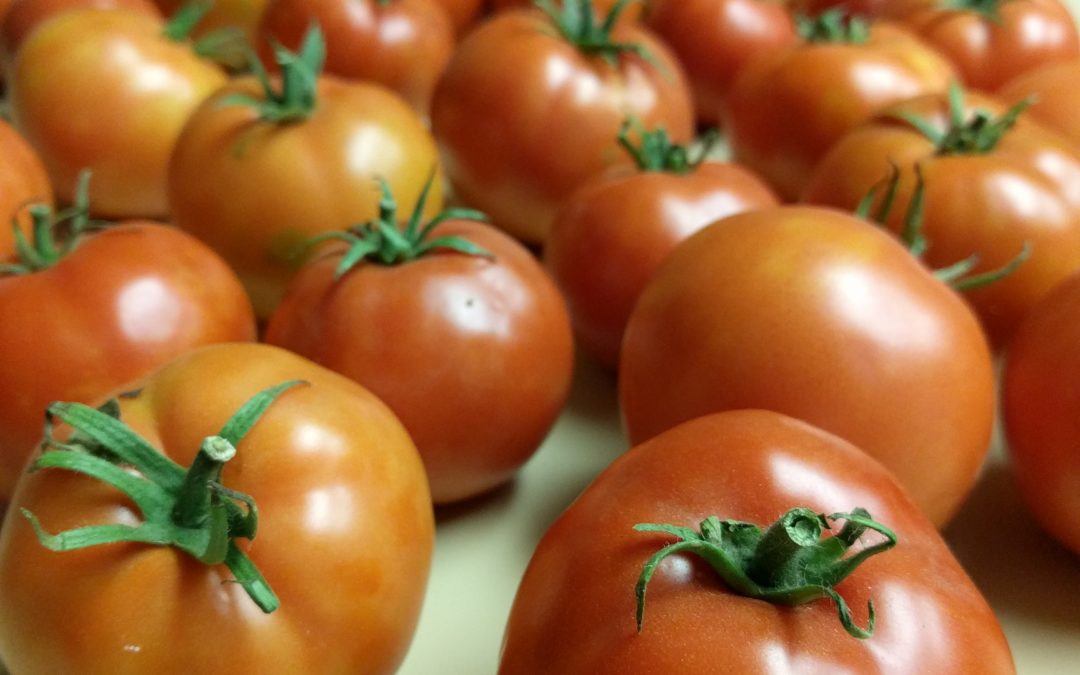
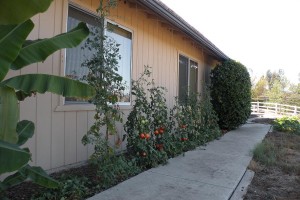

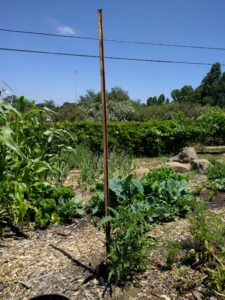
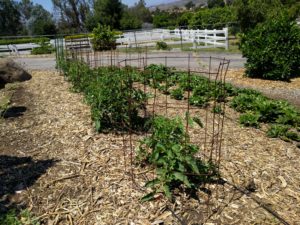
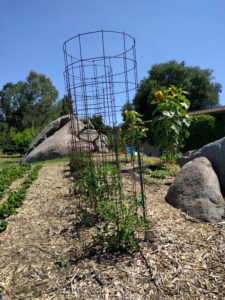
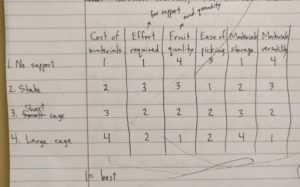


Great cages! How do you cut through the mesh to get the sizes you want?
Wire cutters. It takes some time but isn’t difficult.
we use bolt cutters to cut the wire. I bought part of a roll on Craigslist.
My neighbor who has been doing this since before I was born turned me onto Texas Tomato cages. I have used the cones, the welds break and they are hard to store. I’ve used string and trained 1 main vine but its too much work. I’ve used wire like you have and it works well but doesn’t store well. I’ve used posts and string and it works well for cherry tomatos but not so much for larger tomatoes. The Texas tomato cages are THE best cage you can buy. Not cheap at just under 30$ a piece. But think of this. My neighbor still has his that look like new 20 years later. Good investment in the long run for people like use who are serious about gardening and will still be at it in 20 years.
Just checked out Texas Tomato Cages on their website. They look good. Smart that they are in two parts, both so they can be shipped to customers and so gardeners can store them better.
The difficulty of storing my homemade cages is a negative, for sure, as they take up so much space. One way I’ve learned to get around that somewhat is to “store” many of them in the garden all year and grow other plants up them (cucumbers, peas, pole beans, melons, squash).
Your point about price and longevity is spot on, and it’s exactly what convinced me to finally dive in and go for the big, expensive cages: I recognized that I intended to grow tomatoes in my yard for many years to come, and so the investment would pay off.
I just bought six Texas Tomato Cages! They were out of stock for a while and finally they’re back. Base sizes are are 6′ tall, and 24 or 20″ wide, with 2′ extensions available. Looking forward to using them. For my Sun Gold and other cherry tomatoes, I used a cattle panel ($25) to arch over the 4′ gap between my raised beds. I used it for peas and beans, and now I’ve got cukes growing on them Highly recommend.
Hi Greg, May 20, 2018
I’ve noticed an unusual curling on the leaves of the lower branches of my tomato plants this year. They are curling up, not down like with aphids. The color is good and the plants are fruiting. I have two varieties; Sweet 100 cherry and Best Boy. Both have leaf curl. Should I be concerned?
Hi Bill,
That sounds like what some people call “tomato leaf roll.” As the summer hits and it warms up, the symptoms ought to disappear. There’s nothing to be done about it. No worries.
But have a look at this link for details: http://ipm.ucanr.edu/PMG/GARDEN/VEGES/ENVIRON/tomlfroll.html?src=blog27226
Sometimes leaf roll can be from under watering during heat spells. A little extra water should turn that around in a day or two
We make cages out of cattle panels and purchase them through farm and supply, SD. Make sure your hand can fit through the square. They sell livestock panels for lots of different animals. Cut to length with wire cutter.
Home Depot has 4 foot X 6 foot sheets of like 1/8” mesh used for concrete at around $7-$10 a sheet . I roll them up and zip tie them to make a nice 4 foot tall round cage ……last many seasons . Just keep an eye on the the zip ties as they get cooked and become sun baked and brittle . I use small bolt cutters to cut them if I make smaller cages .
Thanks, Jeff. I’ll look out for those. That’s much more inviting than having to buy a huge roll for $100.
Concrete wire is great to make 4ft. tall round cages any diameter you want. Cheap and easy to cut. Only problem is rust, but they still last years. I cut electric wire in 4 inch pieces to tie.
I went to cattle fencing with the +/- 8″ grid. Use bolt cutters to cut. No rust and looks great if your into a fancier garden.
Have you found a need to paint the cages? How long do they last?
Thanks for all the content you provide!
Hi Ryan,
Thanks! I’ve never painted my cages. They do rust a bit but their integrity seems long lasting without any paint. I’ve had mine for only a handful of years so I don’t know exactly how long they’ll last. However, since I haven’t seen any degradation yet I’m guessing they’ll last at least a handful more. Mine are out in the weather in the yard 365 days a year.
Thanks Greg, good to know! That’ll save me a lot of effort.
Just found your YouTube channel as well, great stuff!